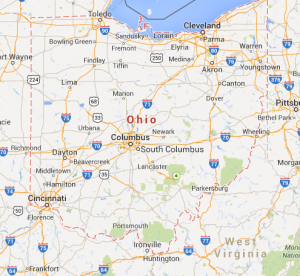Return
Grace Andrews of Independence, MO, USA

Quickly, bring out a robe-the best one-and put it on him; put a ring on his finger and sandals on his feet. And get the fatted calf and kill it and let us eat and celebrate. -Luke 15:22-23
Rembrandt visualized a “picture” in his head from the scripture in Luke 15 and painted The Return of the Prodigal Son. He saw himself in this painting-an arrogant, proud, insensitive, pleasure-driven young prodigal. Many years later two wives had died as well as five of his six children, leaving him alone without property or possessions. At life’s end, he was still drawn to this story in Luke. So he recreated the famous scene one last time; this time painting himself into it, as he imagined-the loving father.
There are two central characters in this painting-a nearly blind old man wearing a rich red cloak, holding his son with deep compassion. The boy’s tunic is torn, one shoe is off, and he is very dirty. The old man’s hands are on the boy’s shoulders. It is a picture of the most tender embrace from a loving, forgiving father and a repentant son. Many feel the painting should have been called The Loving Father.
The father in this story loves so completely, never asking anything in return. He gives the rebellious younger son and the resentful elder son unconditional, forgiving love. I stand in awe at the place where Rembrandt brings me, a troubled child who kneels at the feet of a bent-over father-a place of blessing. Whether the younger or elder son (or daughter), we are all called to become like the Father. As I walk the Worshiper’s Path in the Temple in Independence, Missouri, I often stop and really look at the beautiful etching of the Prodigal.
Author Henri Nouwen writes: “I kneel before the Father, put my ear against his chest and listen to the heartbeat of God.” I look at my own aging hands and realize they have been given to me to stretch out toward those who suffer. Though I willingly grasp opportunities to offer blessings that emerge from the immensity of God’s love and grace, there is still so much more I can do.
Driving down one of our city streets one day, my eyes were drawn to a man slumped over a fence who appeared discouraged and dejected. A woman sat on the sidewalk with a large bundle-it was likely all she had. I wanted to stop and put my arms around each of them and offer hope, but it was not possible as I moved in heavy traffic. For me, they represented those we see every day. They’re all around us. Who will become a blessing to them if we don’t?
Prayer Phrase
My ordinary life is a sacred place.
Spiritual Practice
Sacramental Living
“…our everyday ordinary lives are also sacred places, or put another way, the sacred place of our living. As dwellers within the Sacredness of Creation, there is potential to be aware and appreciate the holy within the ordinary. You may remember times when it felt like you were seeing the world through God’s eyes. That’s a good description for what it means to live sacramentally-to sense divine Spirit amid daily activities.” -Jane M. Gardner, “Sacramental Living,” September/October 2019 Herald, p. 5
How are you invited to live sacramentally today?
Today’s Prayer for Peace
Engage in a daily practice of praying for peace in our world. Click here to read today’s prayer and be part of this practice of peace.



